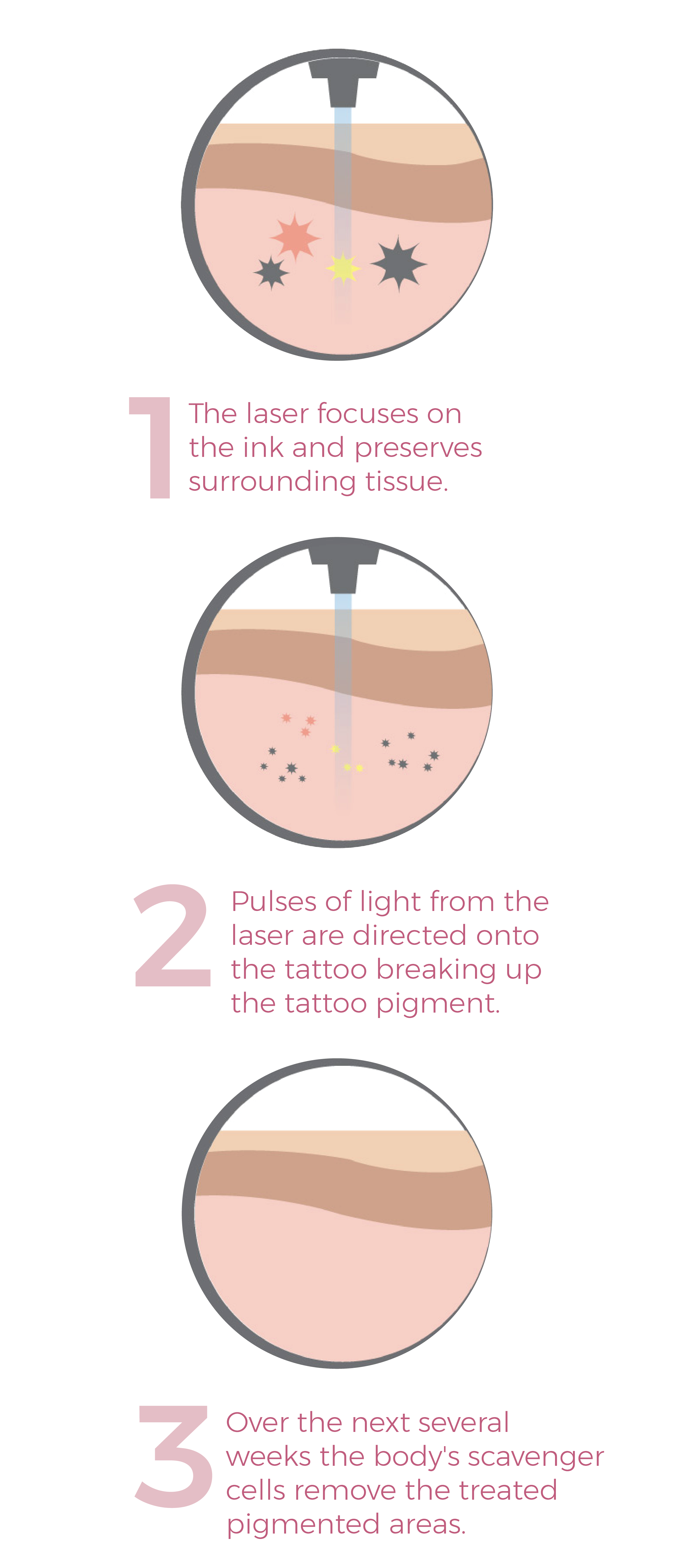

Whilst there are no official records, historical evidence seems to suggest that tattoos have a history dating back more than 30,000 years ago. The art of ‘tattooing’ has infiltrated almost all cultures around the world, to some extent or other.
Early attempts to remove tattoos had undesirable results. The use of dermabrasion, salabrasion and CO2 lasers have left behind scars in place of the tattoo. However, the advent of NdYag Lasers has permitted tattoo removal to be performed with minimal scarring. It is an excellent choice for tattoo removal and can significantly remove or lighten many tattoo inks, particularly blue, black and red inks.


The laser focuses on the ink and preserves surrounding tissue. Pulses of light from the laser are directed onto the tattoo breaking up the tattoo pigment. Over the next several weeks the body’s scavenger cells remove the treated pigmented areas.




Lasers are the treatment of choice for tattoo removal on any part of the body. However, each tattoo is different and factors to be considered include the colors, depth and age of the tattoo as well as the complexity of the tattoo.
Tattoos performed by amateurs often come off more quickly and completely than do professional tattoos. However, tattoos performed by a more experienced tattoo artist may occasionally be easier to remove as the pigment is evenly injected in the same level of the skin. Also, older tattoos may require more sessions for removal compared to a new one.
In terms of colors, certain colors are easily to remove then others. Thus, it is imperative to undergo a consultation prior to the procedure




